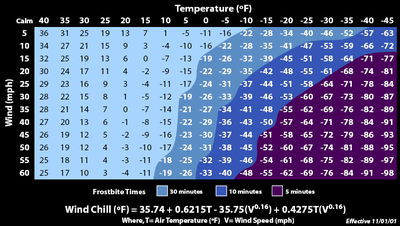As the Niagara Region remains under a Winter Storm Warning for the next 2 days, until Thursday February 3, 2011; it seemed appropriate to provide the following information.
February 1, 2011 - 11:00 a.m.
Current conditions - St. Catharines; -6'C or 20'F -- feels like -14'C or 7'F
Current conditions - Port Colborne; -7'C or 18'F -- feels like -16'C or 3'F
Temperatures are expected to get to 18'F (-7'C) and feel like 1'F (-17'C) during the storm
For your outside dog;
- Raised insulated shelter, with door facing away from prevailing winds (typically in west/southwest to east/northeast fashion) with bedding that is neither damp or padded down. So, check bedding tonight -- replace with dry, fluffed bedding if necessary.
- Water - not snow, not icicles, actual fresh/clean water. Dogs need fresh water available to them all day especially in winter when their bodies are vulnerable to dehydration. Choose your water dish wisely, metal dishes lose heat quickly so switch to a heavy plastic dish will help. So will your choice of color, container size and location – dark colors absorb heat from the sun and a deeper dish will freeze less quickly than a wide, shallow one. In areas where sub-freezing temperatures are common, a more efficient solution is an electric bucket heater or birdbath de-icer. So, check water levels, make sure water is not so cold dog won't drink; refill with room temperature water if necessary; or buy the bucket heater.
- Frostbite -- dogs are susceptible to it; same as humans. If your outside dog insists on sleeping in a snow bank (Siberian/Malamute/heavy-furred dog owners), check them daily to be sure they aren't suffering from frost-bite - ears are a big one; unfurred paws are another, genitalia and tails as well. Signs include;
- The frozen areas appear pale white, gray or blue
- Dead tissue will turn black (amputation may be required)
- The skin will be cold and hard
- If frostbite affects the ears, the tips will droop
- The dog will limp (if frostbite is on the feet/toes)
- Once the area warms up, the skin can become red and swollen and the dog will experience pain (it can also peel, blister and possibly become infected)
Wind Chill Chart - Frostbite Time Frame (Canadian Values)
- Food - high calorie, lots of it. Up the fat content, up the volume; divide it up during the day so the dog has more opportunity to use his calories for warmth. For your shaggy coated dogs that live outside; run a hand over ribs; make sure there is a layer over them for the winter months (ideally you've been putting some weight on your dog before the cold months.) If you feed raw; consider warming (only with lukewarm/warm) water before feeding so the dog isn't ingesting cold/semi-frozen foods.
- Coats -- many makers/brands/types are available -- yes dogs run at a higher temperature than humans; but that doesn't mean they can't become chilled -- if your dog is shivering; he/she is cold; either bring them back inside; or put a coat on them. See Windchill Charts above for recommended outdoor duration.
- Boots -- or at the very least clean your dogs feet -- some breeds are susceptible to cracking/bleeding due to thin skin on the foot pad/paw skin. Salt/calcium chloride can aggravate the skin irritation and make your dog sick if he/she licks it off. Trim furry feet so they don't pick up excess snow and create balls between the pads.
- Extra food -- usually not necessary for the indoor dog; in fact during the winter months if you are unable to spend as much time outdoors as normal; the indoor dog can often put on too much weight. Again; for raw feeders, completely dethaw your pet's dinner if walking outside in the cold afterwards.
- Water -- indoor dogs can become dehydrated too; artificial heat from furnaces/heaters can dry the air and create dehydration.
- Be cautious of leaving pets in cars during cold weather months. When the car is off it doesn't take very long for the temperature to drop inside, leaving it nearly as cold as outside the vehicle.
Common sense, a little extra precautions and keeping an eye on the weather goes a long way to securing the health and well-being of your pet.
Keep warm out there!



No comments:
Post a Comment